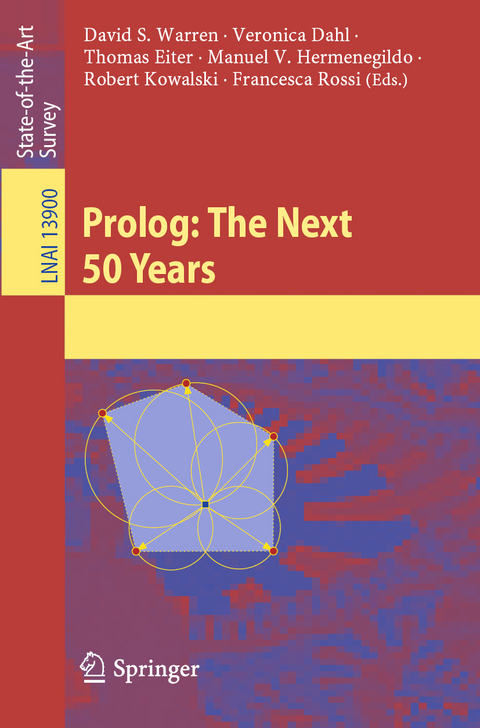
Prolog: The Next 50 Years
Springer International Publishing (Verlag)
978-3-031-35253-9 (ISBN)
After a first chapter that gently introduces the Prolog programming language using examples, the next 7 papers discuss general views of the language, possible extensions for the future, and how Prolog can generally be used to solve problems; the next 5 papers explore ideas and experiences of teaching Prolog programming and then 2 papers discuss technology that has been developed for help in that teaching; the next 3 papers describe new languages based on Prolog which show future directions for logic programming; the next 5 chapters explain the applications that were the finalists for the 2022 Alain Colmerauer Prize; and the final 8 papers describe applications developed using the Prolog language, demonstrating the language's range.
Background.- Introduction to Prolog.- About Prolog, present and future.- Types, modes and so much more - the Prolog way.- Manuel Carro Prolog as a Knowledge Representation Language.- Prolog: Past, Present, and Future.- Writing Correct Prolog Programs.- Demonstrating Multiple Prolog Programming Techniques through a Single Operation.- Logical Semantics for Prolog.- The Janus System: A Bridge to New Prolog Applications.- Teaching Prolog.- Some Thoughts on How to Teach Prolog.- Simultaneously Teaching Mathematics and Prolog in School Curricula: A Mutual Benefit.- Logic Programming at Elementary School: Why, what and how should we teach Logic Programming to children.- Prolog Education in Selected High Schools in Bulgaria.-Introducing Prolog in Language-Informed Ways.- Tools for teaching Prolog.- Teaching Prolog with Active Logic Documents.- Simply Logical - The First Three Decades.- Prolog-based languages and systems Dynamic Logic Programming.- Combining Prolog and Imperative Computing in LPS.- Quintero Ergo: A Quest for Declarativity in Logic Programming.- Prolog applications: finalists for the Colmerauer prize ProB: Harnessing the Power of Prolog to Bring Formal Models and Mathematics to Life.- Pacioli: a PROLOG system for financial report validation.- Logic Model Processing.- Symbium: Using logic programming to streamline citizen-to-government interactions.- PROLEG: Practical Legal Reasoning System.- Contributed Prolog applications.- Logical English for Law and Education.- Exploiting Logic Programming for Runtime Verification: Current and Future Perspectives.- Prolog meets Biology.- Prolog in Automated Reasoning in Geometry.- Logic-based Explainable and Incremental Machine Learning.- Reflections on Automation, Learnability and Expressiveness in Logic-based Programming Languages.- Prolog for Scientific Explanation.- Machines as Thought Partners: Reflections on 50 Years of Prolog.
| Erscheinungsdatum | 18.06.2023 |
|---|---|
| Reihe/Serie | Lecture Notes in Artificial Intelligence | Lecture Notes in Computer Science |
| Zusatzinfo | XVI, 394 p. 129 illus., 99 illus. in color. |
| Verlagsort | Cham |
| Sprache | englisch |
| Maße | 155 x 235 mm |
| Gewicht | 619 g |
| Themenwelt | Informatik ► Theorie / Studium ► Künstliche Intelligenz / Robotik |
| Schlagworte | Alain Colmerauer • Artificial Intelligence (AI) • Knowledge representation (KR) • Logic • Logic Programming • Program Semantics • Proleg • PROLOG |
| ISBN-10 | 3-031-35253-X / 303135253X |
| ISBN-13 | 978-3-031-35253-9 / 9783031352539 |
| Zustand | Neuware |
| Haben Sie eine Frage zum Produkt? |
aus dem Bereich


